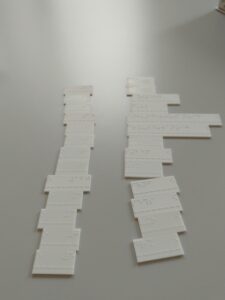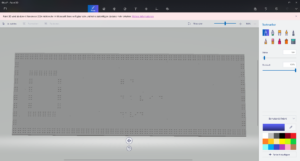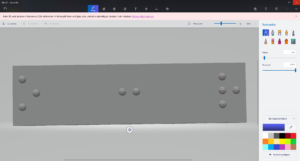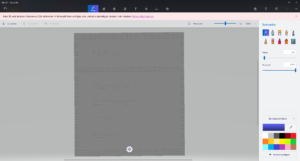Introduction
We all probably have a few unpleasant memories of yawningly boring classes. Today, we will show you that it can be completely different.
Richard Bruse is a instructor in vocational rehabilitation for visually impaired and blind people at the SFZ Förderzentrum gGmbH, Sehzentrum Berlin.
For his lessons, the 30-year-old from Germany, who is visually impaired, uses some adapted learning games created through 3D printing, which he will introduce to us here.
Thank you, Richard, for your commitment and for sharing your refreshing, playful teaching methods with us!
Learning by playing
With the advancement of 3D printing technology for commercial and private users, I was able to start my search for a Braille learning game. to develop some games as 3D printing templates. I found a generator for room signs in Braille online and used it to create a few different types of games.
https://benjaminaigner.github.io/braillegenerator/index.html
I also found some ready-made templates on the cults3d.com website that I could easily incorporate into my lessons. I had these templates printed and use the games to teach braille in my lessons. The games are very well received by the participants due to the combination of well-known game concepts and the strongly defined and unyielding dot pattern. They make it much easier to train the participants at the same time. The prints are made of plastic and are easy to touch. The dots are too pointy for some people, but this could be fixed with sandpaper, I left them untreated.
I created a matching game where you have to match two cards to make a whole word or a pair of numbers in Braille (coded) and as spelled out word.
The second game is a variant of the domino game. Each player has the same number of cards and must extend the line in the middle. There must be the same Braille combination on each side of the connection.
The third print consists of cards showing each character of the Alphabet in black ink letters and in German Blindenvollschrift (German grade 1 Braille).
Vorstellung
Wir alle haben vermutlich ein paar unschöne Erinnerungen an gähnend langweiligen Unterricht. Heute zeigen wir euch, dass das auch ganz anders geht.
Richard Bruse ist Ausbilder in der beruflichen Rehabilitation für sehbehinderte und blinde Menschen im SFZ Förderzentrum gGmbH, Sehzentrum Berlin.
Für seinen Unterricht nutzt der 30-jährige Sehbehinderte aus Deutschland einige abgewandelte und per 3D-Druck erstellte Lernspiele, die er uns hier vorstellen wird.
Vielen Dank, Richard, für dein Engagement, und dass du deine erfrischen spielerischen Unterrichtsmethoden mit uns teilst!
Lernen durch spielen
Durch das Voranschreiten der 3D-Drucktechnik für gewerbliche und private Anwender war es mir möglich, für meine Suche nach einem Braille-Lernspiel einige Spiele als 3D-Druck Vorlage zu entwickeln. Online fand ich einen Generator für Raumschilder in Brailleschrift, mit diesem erstellte ich einige verschiedene Spielearten.
https://benjaminaigner.github.io/braillegenerator/index.html
Auf der Webseite cults3d.com fand ich auch einige fertige Vorlagen, die ich gut in meinen Unterricht einbinden konnte. Diese Vorlagen ließ ich drucken und verwende die Spiele zum Lernen der Punktschrift in meinem Unterricht. Die Spiele finden hohen Anklang bei den Teilnehmenden durch die Verbindung von bekannten Spielkonzepten und dem stark definierten und unnachgiebigen Punktbild. Sie erleichtern das gleichzeitige Beschulen der Teilnehmer sehr. Die drucke sind aus Kunststoff und gut ertastbar. Manchen sind die Punkte zu scharfkantig, dass kann man mit Sandpapier aber wenn nötig beheben, ich habe sie unbehandelt gelassen.
Ich habe ein Zuordnungsspiel entwickelt, bei dem man zwei Karten einander zuordnen muss, um ein ganzes Wort oder ein Zahlenpaar in Blindenschrift (codiert) und als buchstabiertes Wort zu bilden.
Das zweite Spiel ist eine Variante des Dominospiels. Jeder Spieler hat die gleiche Anzahl an Karten und muss die Linie in der Mitte verlängern. Auf beiden Seiten der Verbindung muss die gleiche Braille-Kombination vorhanden sein.
Der dritte Druck besteht aus Karten, die jedes Zeichen des Alphabets in schwarzen Buchstaben (Druckschrift) und in deutscher Blindenvollschrift zeigen.




useful links:
Read all articles on:
Contact us with your contributions, ideas and questions by:
Braille 200 on Facebook: